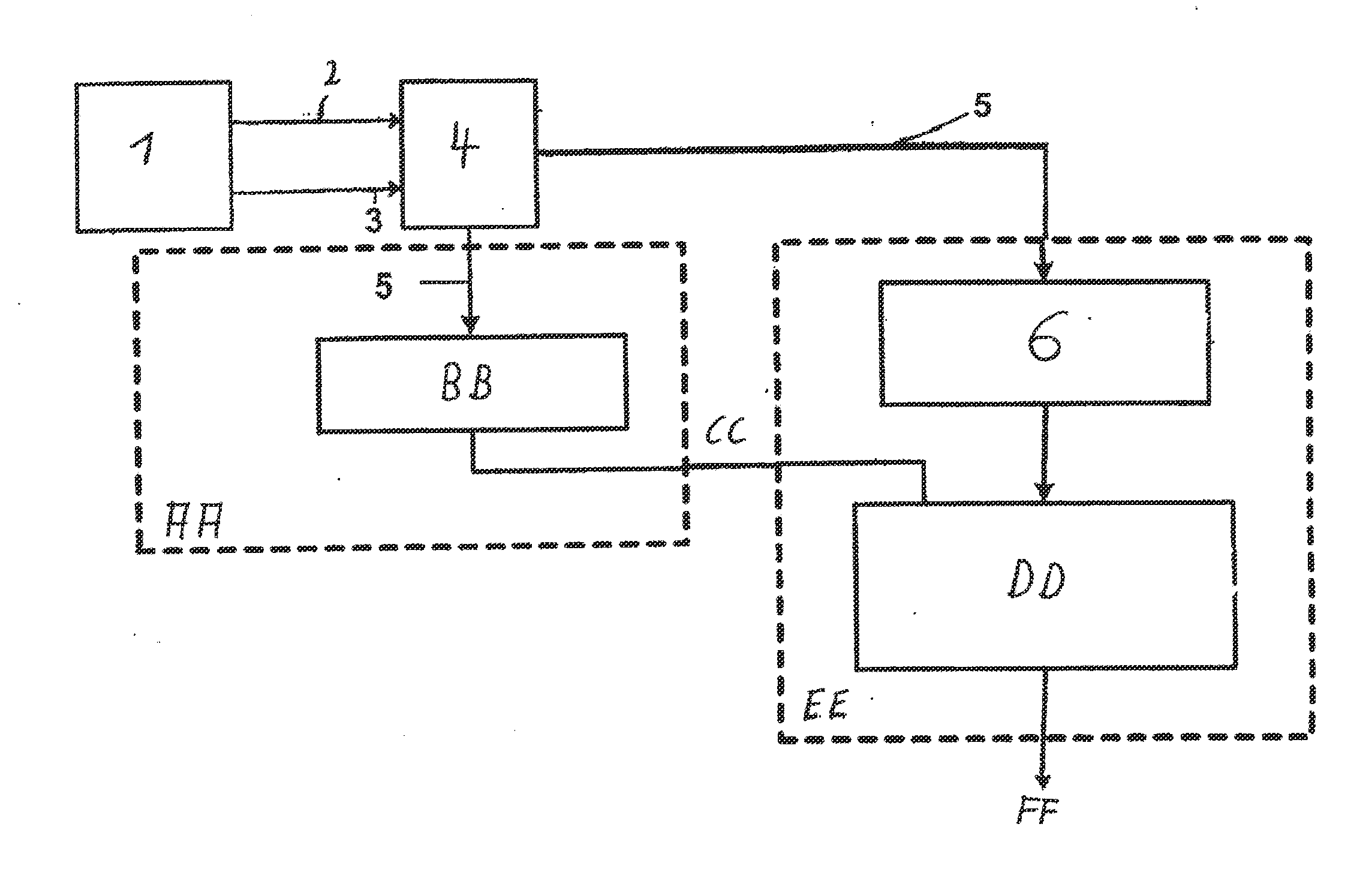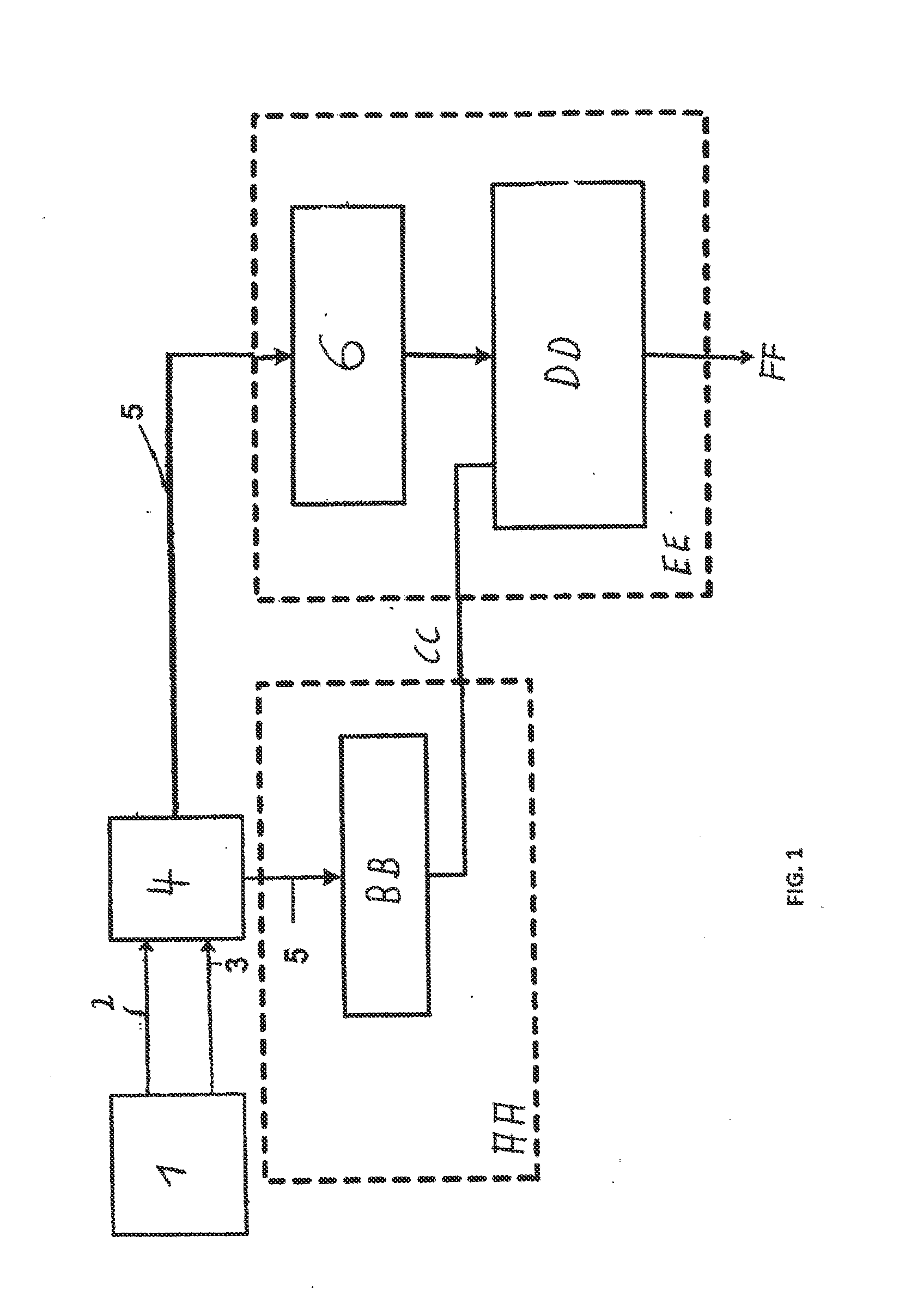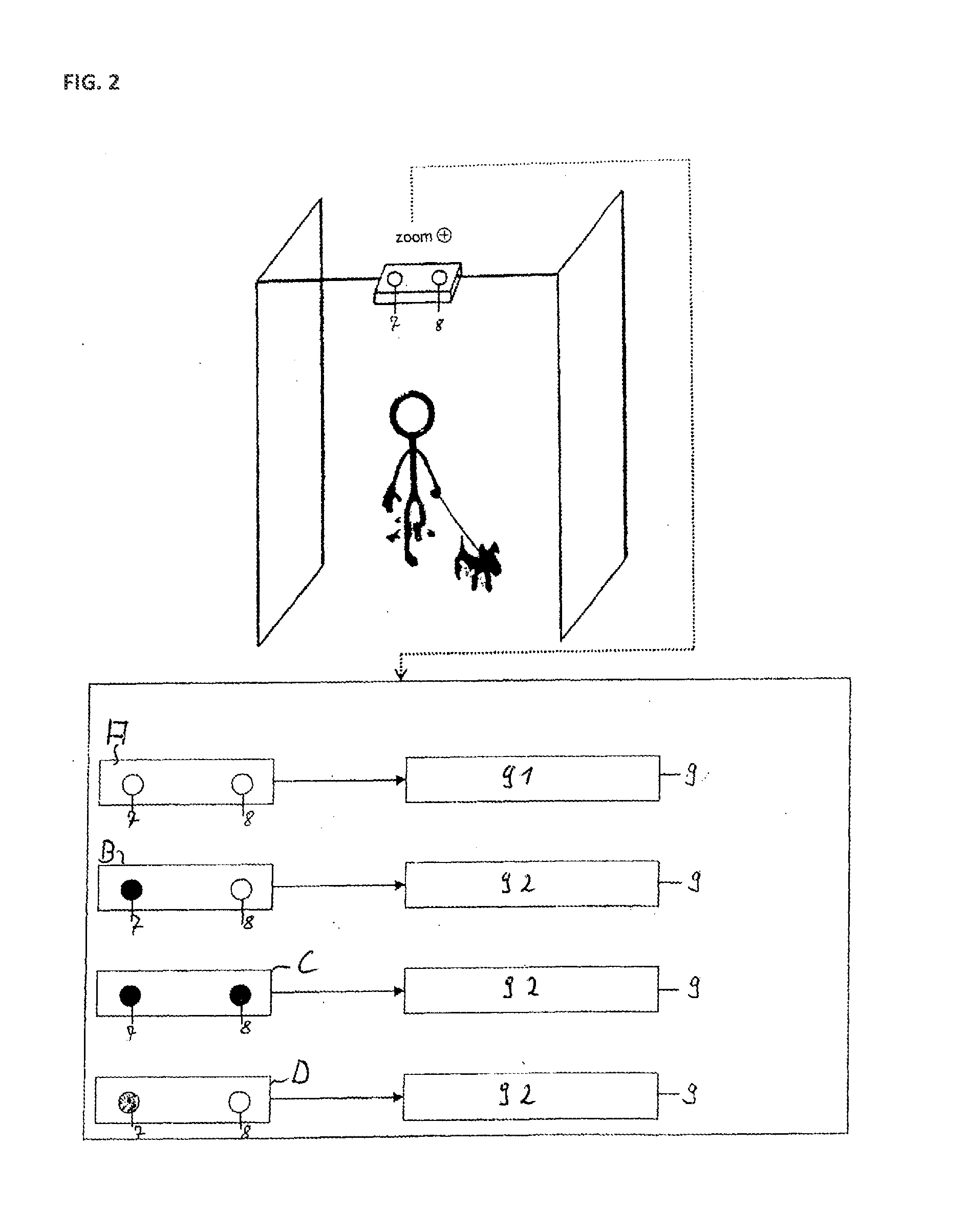Optical Self-Diagnosis of a Stereoscopic Camera System
- Summary
- Abstract
- Description
- Claims
- Application Information
AI Technical Summary
Benefits of technology
Problems solved by technology
Method used
Image
Examples
Embodiment Construction
[0024]FIG. 1 shows a schematic functional sequence of a method with which a camera system can be tested automatically for functionality. This camera system concerns a numbering system. At the first step, a stereo camera 1 of the camera system simultaneously records a right partial image 2 and a left partial image 3 of an object from different perspectives. The two partial images 2, 3 are rectified at first by an algorithm, i.e. they are rectified and transformed in such a way as if they had been recorded by an ideal stereo camera system aligned in parallel. The right partial image 2 and the left partial image 3 are compared to each other line by line in a matching method 4, and mutually corresponding pixels in the two partial images 2 and 3 may be determined. A disparity value is assigned to each of these pixels, which disparity value is defined as a horizontal parallax between the position of the mutually corresponding pixels in the two partial images 2 and 3. A depth image, which ...
PUM
 Login to View More
Login to View More Abstract
Description
Claims
Application Information
 Login to View More
Login to View More - R&D
- Intellectual Property
- Life Sciences
- Materials
- Tech Scout
- Unparalleled Data Quality
- Higher Quality Content
- 60% Fewer Hallucinations
Browse by: Latest US Patents, China's latest patents, Technical Efficacy Thesaurus, Application Domain, Technology Topic, Popular Technical Reports.
© 2025 PatSnap. All rights reserved.Legal|Privacy policy|Modern Slavery Act Transparency Statement|Sitemap|About US| Contact US: help@patsnap.com



